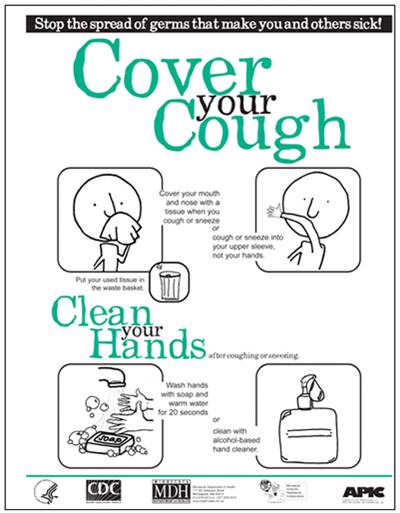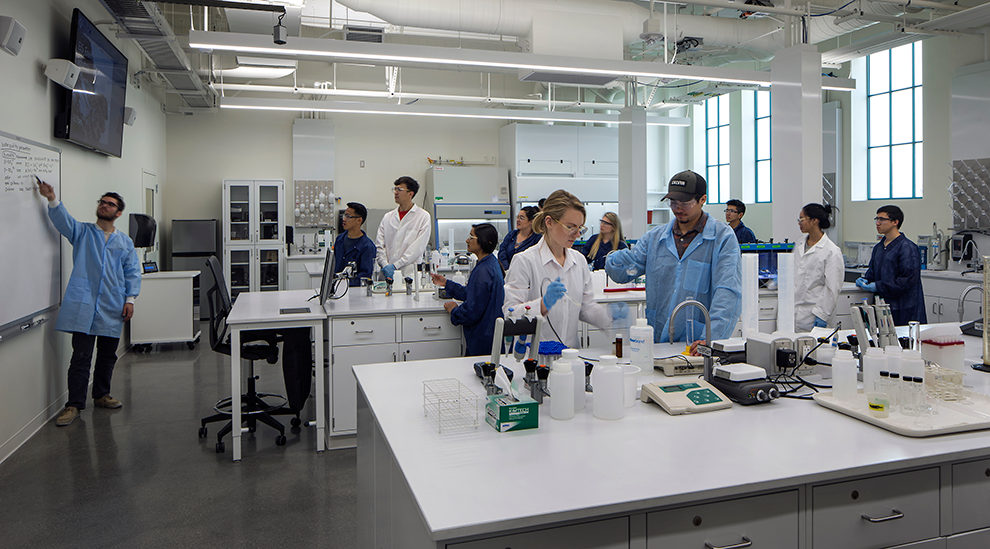Flu Season Preparedness and Planning
The campus is preparing for seasonal and H1N1 flu outbreaks.

With school back in session and flu season quickly approaching, SDSU is taking steps to prevent, minimize and respond to outbreaks of both seasonal and novel H1N1 (aka “Swine” flu).
Flu Prevention
Vaccination is the most powerful tool in preventing spread of flu. Student Health Services is focusing its plans to immunize students. Because of the unusual circumstances this flu season, SDSU is working with its insurance providers to develop an effective way to distribute vaccine on campus to faculty and staff. In the meantime, faculty and staff should check with their medical providers about the availability of vaccinations in off-campus locations.
There are two different vaccines for this year, one for seasonal flu and the other for H1N1. While seasonal flu vaccine is already starting to be distributed, it is anticipated that H1N1 vaccinations will not begin until mid-October.
Seasonal flu vaccine is now available at Student Health Services. At this time, limited doses of vaccine are available and will be given first to high risk students. High risk students can walk-in Monday-Thursday from 8:30 a.m. – 12 p.m. and 1:30 p.m. – 4 p.m. If you have any questions, call (619) 594-7339.
The vaccine for H1N1 may require two injections a month apart, so a total of three immunizations may be needed for some individuals. The target groups for the two vaccines are slightly different and will be publicized in an additional notification to the campus community. Both vaccines are indicated for certain high-risk individuals, but the initially limited availability of H1N1 vaccine will probably result in certain groups receiving the vaccine before others, such as:
- Pregnant women
- People who live with or care for children younger than 6 months of age
- Health care and emergency medical services personnel with direct patient contact
- Children 6 months through 4 years of age
- Children 5 through 18 years of age who have chronic medical conditions
Students, faculty and staff should continue to take the following precautions to prevent the spread of infection:
- Cover your nose and mouth with a tissue when you cough or sneeze. Throw the tissue in the trash
- Wash your hands often with soap and water, especially after you cough or sneeze. Alcohol-based hand cleaners are also effective. Sanitizers have been placed in locations throughout campus. If there is a location you feel needs a sanitizer installed, please contact the Work Control Center at (619) 594-4754, or [email protected]
- Avoid touching your eyes, nose or mouth
- Try to avoid close contact with sick people
If you're sick with the flu
- Individuals with flu symptoms should stay home for at least 24 hours after they no longer have a fever, or signs of a fever, without the use of fever-reducing medicines. People infected with seasonal and 2009 H1N1 flu may be able to infect others from a day before getting sick to seven days after
- Stay away from classes and limit interactions with other people, except to seek medical care
- Get a “flu buddy,” pairing up with another student to deliver your meals and make contact with professors if you're ill
- Students with flu-like illness who live relatively close to campus should return to their home to keep from making others sick
- If ill and close contact with others cannot be avoided, you should wear a surgical mask during the period of contact
H1N1
The symptoms of H1N1 flu are similar to those caused by the usual strains of influenza virus and include fever over 100 degrees orally plus other symptoms such as:
- Cough
- Sore throat
- Runny or stuffy nose
- Muscle aches
- Headache
- Fatigue
- And occasionally, stomach symptoms such as nausea, vomiting or diarrhea
Pandemic Planning
SDSU officials continue to work closely with the County of San Diego in monitoring and addressing as necessary H1N1 flu concerns in the area. SDSU has a pandemic plan in place that addresses mitigation and response measures the campus may use should social distancing or campus closure become necessary. The pandemic plan is reviewed regularly by the campus pandemic management team in consultation with the medical director of Student Health Services.
Measures in the plan include:
- Educating and raising awareness about the importance of personal hygiene to prevent the spread of infection
- Implementing a vaccine campaign
- Establishing a campus location for quarantining sick students
- Monitoring absences and illness rates
- And implementing strategies for faculty for instructional continuity
Urgent Information Website
Last spring a website was created to provide timely information regarding H1N1 at San Diego State, as well as general information about the virus and other resources. The Urgent Information web site will be updated as it becomes necessary.
Faculty is also being encouraged to, if they are not already, utilize the Blackboard learning management system so that, in the event of class cancellations, they have the ability to more easily communicate with students to support course work.Faculty can learn more about Blackboard through Instructional Technology Services.
Campus Contacts
Students with health related questions can contact Student Health Services’s Flu Information Line at (619) 594-3078 or the office at (619) 594-5281.
Other questions can be sent via e-mail to [email protected].



